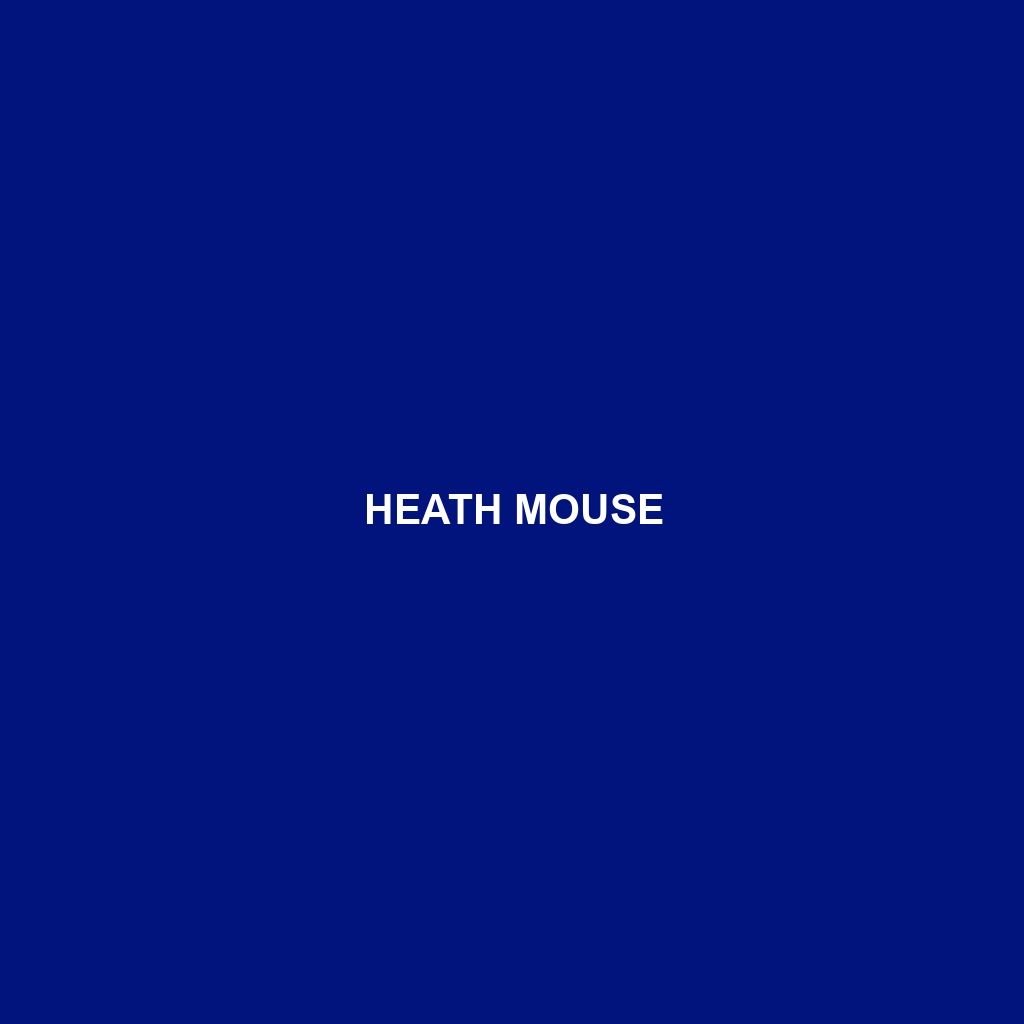Heath Mouse (Scientific Name: )
Common Name: Heath Mouse
Scientific Name:
Habitat
The Heath Mouse primarily inhabits heathland environments, particularly in areas characterized by low shrubs, grasses, and peaty soils. This species is commonly found in regions of southeastern Australia, including New South Wales and Victoria, where native bushlands provide the essential cover and food sources needed for survival. Heathlands with moderate to dense foliage are ideal for Heath Mice, as they offer protection from predators and suitable nesting sites.
Physical Characteristics
The Heath Mouse is a small rodent, measuring approximately 8 to 12 cm in body length, with a tail that can be an additional 6 to 10 cm long. Its fur is typically soft and short, exhibiting a blend of brown and gray tones, which provide excellent camouflage against the heathland environment. Notable features include large eyes and ears, which enhance its sensory capabilities. The Heath Mouse also has distinctive long whiskers, aiding in navigation through dense vegetation.
Behavior
Heath Mice are generally nocturnal, emerging at dusk to forage for food. They are known for their agility and quick movements, often scurrying through dense undergrowth. These rodents exhibit social behaviors, living in small groups that help them maintain vigilance against predators. Additionally, they utilize burrows and nest sites created in the vegetation to rest and reproduce, showcasing a strong adaptation to their natural habitat.
Diet
The diet of the Heath Mouse primarily consists of seeds, fruits, and green plant material. They are adept foragers, employing a variety of feeding strategies to locate food within their heathland habitats. Common food sources include native grasses and the seeds of various shrubs, which provide essential nutrients. Their foraging habits play a crucial role in seed dispersion within their ecosystem, contributing to plant diversity.
Reproduction
Reproductive activity in Heath Mice typically occurs during the warmer months, peaking in spring and early summer. After a gestation period of approximately 30 days, females give birth to litters ranging from 2 to 6 offspring. The young mature quickly, reaching sexual maturity within 6 to 8 weeks. Parental care is predominant, with mothers often carrying their young to new nesting sites as the litter grows.
Conservation Status
The Heath Mouse is currently classified as vulnerable due to habitat loss and degradation, primarily driven by human activities such as agriculture and urban development. Conservation efforts are crucial to preserving this species and its natural environments. Protection of heathlands and increased habitat management practices can aid in stabilizing their populations.
Interesting Facts
One fascinating aspect of the Heath Mouse is its ability to communicate through a series of high-frequency sounds that are inaudible to humans. This form of communication helps them maintain social structures within their groups and coordinate foraging activities. Additionally, they are intricate nest builders, often using a variety of materials, including leaves and grasses, to create secure and insulated nests.
Role in Ecosystem
The Heath Mouse serves as an important prey species for various predators, including birds of prey and larger mammals, thus playing a vital role in the food web of heathland ecosystems. Furthermore, by foraging and dispersing seeds, Heath Mice contribute to the regeneration and health of their habitats, ensuring a balance within their environmental niche.
